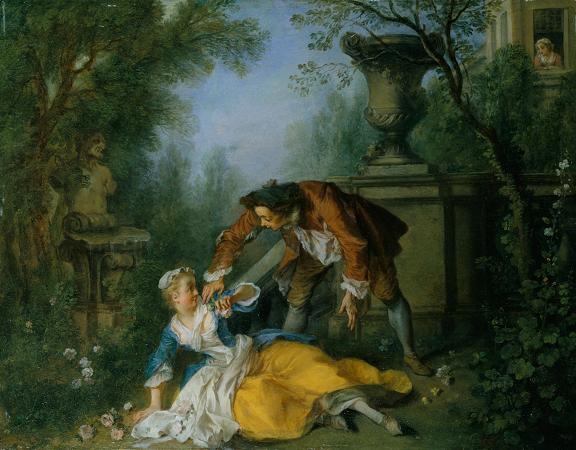William Hogarth (1697 - 1764). William Hogarth was a groundbreaking English artist known for his satirical and moralistic paintings and engravings. He was a pioneer of narrative art, using sequential images to tell stories and critique society. He was also a vocal advocate for artists' rights, successfully lobbying for the Copyright Act of 1735. He was influenced by the Dutch Golden Age painters, particularly Jan Steen, who inspired his interest in storytelling and genre painting. Hogarth's Rake's Progress follows the tragic downfall of a young aristocrat due to his reckless lifestyle. His Marriage a la Mode satirizes the corrupt and superficial nature of high society through the disastrous marriage of two young people. Gin Lane is a powerful indictment of the social problems caused by alcohol consumption in 18th-century London. Knowledge of his work is so pervasive that satirical political illustrations in this style are often referred to as Hogarthian. He was born in London to a lower-middle-class family. In his youth he took up an apprenticeship with an engraver, but did not complete the apprenticeship. His father underwent periods of mixed fortune, and was at one time imprisoned in lieu of payment of outstanding debts, an event that is thought to have informed William's paintings and prints with a hard edge. Influenced by French and Italian painting and engraving, Hogarth's works are mostly satirical caricatures, sometimes bawdily sexual, mostly of the first rank of realistic portraiture. They became widely popular and mass-produced via prints in his lifetime, and he was by far the most significant English artist of his generation. Charles Lamb deemed Hogarth's images to be books, filled with the teeming, fruitful, suggestive meaning of words. Other pictures we look at; his pictures we read. William Hogarth was born at Bartholomew Close in London to Richard Hogarth, a poor Latin school teacher and textbook writer, and Anne Gibbons. In his youth he was apprenticed to the engraver Ellis Gamble in Leicester Fields, where he learned to engrave trade cards and similar products. Young Hogarth also took a lively interest in the street life of the metropolis and the London fairs, and amused himself by sketching the characters he saw. Around the same time, his father, who had opened an unsuccessful Latin-speaking coffee house at St John's Gate, was imprisoned for debt in the Fleet Prison for five years. Hogarth never spoke of his father's imprisonment. In 1720, Hogarth enrolled at the original St Martin's Lane Academy in Peter Court, London, which was run by Louis Chéron and John Vanderbank. He attended alongside other future leading figures in art and design, such as Joseph Highmore, William Kent, and Arthur Pond. However, the academy seems to have stopped operating in 1724, at around the same time that Vanderbank fled to France in order to avoid creditors. Hogarth recalled of the first incarnation of the academy: this lasted a few years but the treasurer sinking the subscription money the lamp stove etc were seized for rent and the whole affair put a stop to. Hogarth then enrolled in another drawing school, in Covent Garden, shortly after it opened in November 1724, which was run by Sir James Thornhill, serjeant painter to the king.
more...














